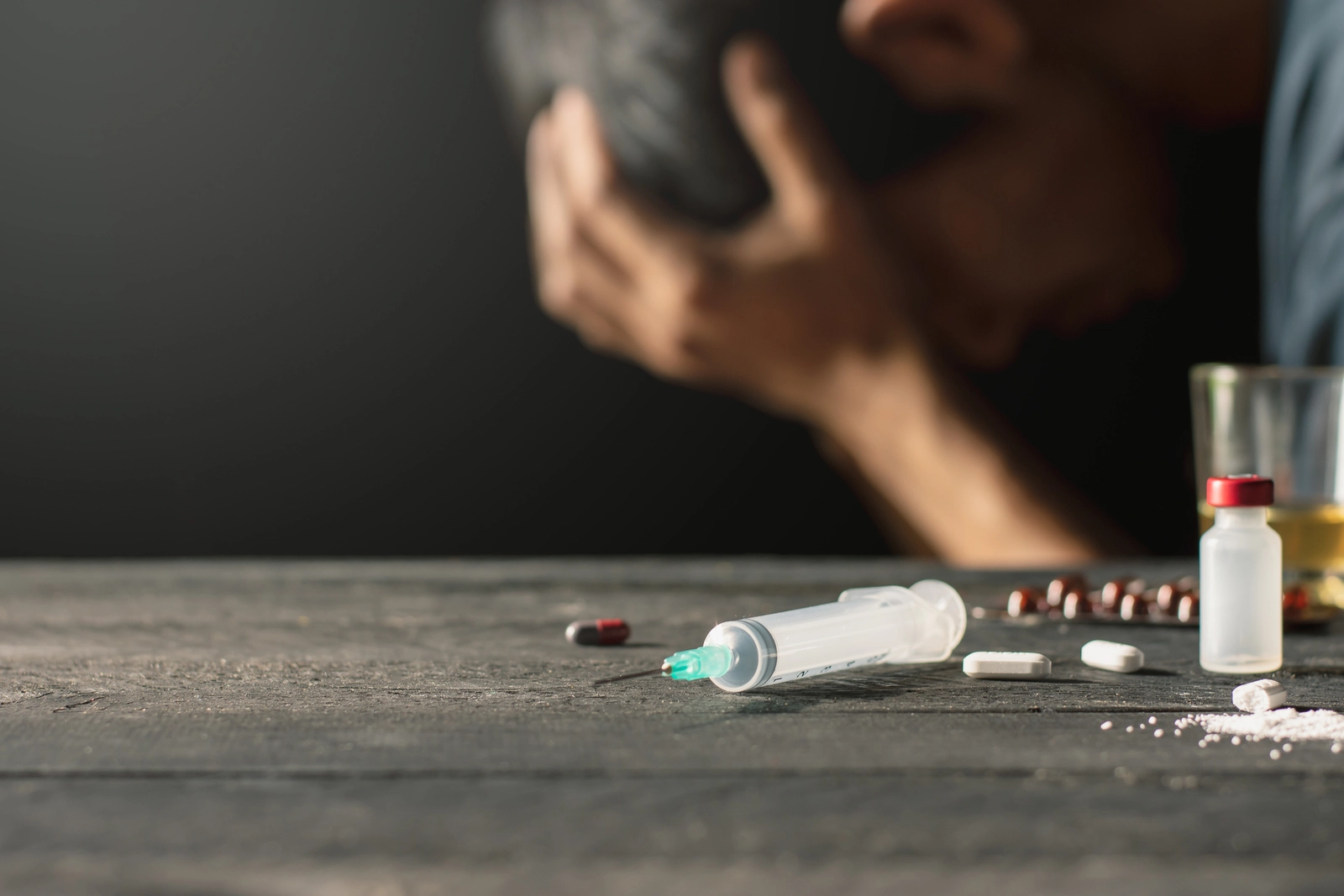Addiction | 7 min read
What Are The Ways of Preventing Drug Abuse?
Medically Reviewed By

On August 26, 2024
Written By

On August 19, 2022

What you will learn
- Drug abuse is a public health crisis that affects millions across the US.
- Though addiction treatment can be effective in addressing a current addiction, it’s best to prevent addiction before it starts.
- Researchers are developing addiction prevention programs for specific groups to address their addiction risk factors.
- There are ways you can help prevent addiction in your loved ones and encourage them to get help if they struggle with drug abuse.
Drug and alcohol addiction is a public health crisis, including the use of illegal drugs, the misuse of prescription drugs, and addiction to legal substances like alcohol and tobacco. Regardless of the substance, there are serious risks to our health. In 2023 alone, there were an estimated 107,543 overdose deaths in the US.[1]
Addiction treatment can be effective in overcoming addiction once it occurs, but there are also ways of preventing drug abuse before it begins, or helping someone who’s already struggling.
Causes of Drug Abuse
Drug abuse and addiction, also known as substance use disorder, is a disease that affects a person’s brain and behavior, causing an inability to control the use of a substance. Drugs aren’t just prescription medications and illegal drugs like opioids and methamphetamines, but also include legal substances like alcohol and nicotine.
There are many ways drug addiction can start, from adolescents trying a recreational drug with friends or adults becoming addicted to prescription medications they were legally prescribed. Like many mental health disorders, several factors may contribute to drug addiction, including:[2]
- Environment: Environmental factors, such as peer groups or household attitudes toward substances, can influence initial drug use.
- Genetics: Drug use can develop into an addiction based on genetic traits that can affect how the disease progresses.
Several risk factors can affect whether you become addicted to a drug, including:[3]
- Family history of addiction: Drug addiction is more common in some families and may be affected by genes. If you have blood relatives with alcohol or drug addiction, you have an increased risk of developing an addiction yourself.
- Mental health disorders: Mental health disorders, like depression or anxiety, can make you more likely to become addicted to drugs. Some people self-medicate their mental illness to cope with painful or uncomfortable feelings, but it can often make them worse.
- Social influences: Peer pressure is a significant factor in starting to use and misuse drugs, particularly for adolescents.
- Lack of family involvement: An unstable home life or lack of bonding with parents or siblings can increase the risk of addiction. The same is true for adolescents with minimal parental supervision.
- Early use: Using drugs at a young age can affect the developing brain and increase the likelihood of drug use progressing to addiction.
- Highly addictive drugs: Some substances have a higher risk of developing into an addiction, including opioid painkillers and stimulants like cocaine. How the drug is used can also affect how powerful the addiction potential is, such as smoking or injecting drugs.
How Does Preventing Drug Abuse Differ with Someone Who Is at Risk vs. Someone Who Is Already Addicted?
Preventing drug abuse requires different approaches depending on whether someone is at risk or already struggling with addiction. While both strategies aim to reduce harm and promote healthier behaviors, the goals and strategies differ.
If someone is at risk – or you are – the focus is on education, early intervention, and the development of protective factors to help avoid drug use altogether. This may involve fostering positive relationships, cultivating emotional resilience, and promoting open dialogue.
Someone who is already addicted requires interventions that reduce harm, address physical dependence, and provide emotional and behavioral support to reach recovery. The focus is on interrupting the cycle of addiction through treatment, planning for recovery, and developing strategies to prevent relapse.
Understanding the differences between these two situations allows parents, family, and friends to tailor prevention strategies more effectively.
Preventing Drug Abuse in Someone Already Struggling With Addiction
If someone is already showing signs of substance use or is actively misusing drugs, prevention focuses on reducing harm, encouraging treatment, and minimizing the risk of relapse.
Encourage Early Treatment
Intervening early with addiction treatment options can prevent further harm, including possible overdose. Treatment may include:
- Medical detox: This is an essential part of overcoming drug withdrawal, which can be life-threatening with some substances. Medical detox provides a safe, comfortable environment with medical supervision to manage withdrawal symptoms and prevent complications.
- Inpatient or outpatient rehab: Inpatient rehab provides 24/7 care in a structured environment, which is ideal for people struggling with severe addictions. Outpatient rehab offers more flexibility, allowing individuals to balance rehab and therapy sessions with their responsibilities at home or to their family.
- Counseling or behavioral therapy: Therapy helps people address the underlying causes of addiction and develop healthier coping strategies. Common approaches include cognitive behavioral therapy (CBT), motivational interviewing, and individual and group counseling.
- Medication-assisted treatment (MAT) for opioid or alcohol addiction: MAT uses FDA-approved medications and behavioral therapies to treat substance use disorders, especially for opioid and alcohol addiction. It can reduce cravings and prevent relapse.
Acting quickly may prevent escalation and reduce long-term health impacts. People are more likely to respond positively to treatment when it’s introduced early in their addiction.
Provide Ongoing, Judgment-Free Support
Offer empathy and encouragement without enabling their behavior:
- Avoid shaming or blaming, which may only make them more resistant to change
- Use “I” statements to express concern
- Support treatment efforts and celebrate progress
Be supportive in helping them find appropriate treatment providers, attend therapy appointments, or join family support groups that address the effects of addiction on loved ones.
Reinforce Healthy Routines
Help them establish structure in their life with positive routines:
- Consistent sleep and meal schedules
- Involvement in group therapy or peer support meetings
- Participation in hobbies and social activities that don’t involve drugs
Lifestyle balance is a critical part of relapse prevention. Creating a routine can help regulate mood and reduce cravings.
Preventing Drug Abuse in Someone Who May Be at Risk (Including Yourself)
If you or someone you care about hasn’t started using drugs but may be at risk, prevention can include education, environmental changes, and positive reinforcement.
Recognize Risk Factors
Understanding your or a loved one’s vulnerability is an important step:
- Family history of addiction
- Depression, anxiety, or trauma
- Exposure to peer pressure or unstable environments
As mentioned, these risk factors often overlap. Once you’re aware of them, you can take proactive steps to avoid exposure to triggers.
Communicate Early and Often
Whether you’re a parent, teacher, or friend, having open conversations about drugs matters:
- Discuss consequences without fear tactics
- Address myths, such as “marijuana is harmless” or “everyone drinks.”
- Make space for questions and discussions without judgment
Prevention is most effective when it’s built on trust. Starting age-appropriate conversations in childhood and continuing them into adulthood reinforces the development of positive choices.
Strengthen Protective Factors
Foster positive influences and emotional well-being:
- Encourage involvement in school, sports, clubs, or volunteering
- Reinforce coping strategies for stress
- Build self-esteem and decision-making skills
Children and teens who feel a sense of belonging and achievement are less likely to engage in risky behaviors.
Be a Role Model
Your actions model the way. Avoid excessive drinking, recreational drug use, or dismissive attitudes toward substance abuse, especially with adolescents, and share your own stories about overcoming adversity or resisting peer pressure.
How to Prevent Drug Addiction: Where the Research Stands
Researchers have been studying the factors that affect substance use and have developed evidence-based prevention strategies tailored to specific age groups and populations to reduce these risk factors, delay the onset of drug use, and stop it from progressing into a substance use disorder. Some of these evidence-based strategies include:[4]
- Family-based programs: Family-based programs are intended for parents and caregivers to access resources to prevent substance abuse in children. For example, family-based programs may include parenting classes to teach parents how to build supportive relationships with children.
- School-based programs: These programs help students develop social, emotional, cognitive, and substance-refusal skills. They may include education, training in coping skills, connecting at-risk children with positive mentors, and after-school activities.
- Community-based programs: Community-based programs work with community organizations and leadership to focus on local at-risk communities. These programs are tailored to the unique needs of each community.
- Population-specific programs: Population-specific programs help groups with shared characteristics or circumstances, such as racial groups, gender groups, or ethnic groups, overcome the challenges of drug addiction that affect their community. For example, this program may focus on homeless youth to help with their basic needs and reduce addiction risk factors.
- Healthcare prevention strategies: Prevention strategies in healthcare facilities help medical staff identify patients who may be at an increased risk of substance use disorders and direct them to treatment services.
Signs and Behaviors of Drug Use
Some drug addiction signs and behaviors are specific to the drug involved, but the signs generally include:[5]
- Feeling the need to use a drug regularly, even several times a day
- Experiencing intense urges for a drug that consumes thoughts
- Needing more and more of the drug to get the same effect
- Taking larger amounts of the drug over a more extended period than intended
- Spending money on drugs and getting into financial trouble
- Not meeting obligations and work responsibilities because of drug use
- Continuing to use the drug despite problems or harm
- Doing things to get drugs that are out of character, such as stealing
- Driving or engaging in other risky activities under the influence of the drug
- Spending a lot of time getting, using, or recovering from the drug
- Trying to stop using a drug unsuccessfully
It can be difficult to identify drug abuse in family members, particularly adolescents who can be moody or anxious. Here are some signs to look out for:[6]
- Problems at school or work, such as frequent absences, a loss of interest in school, or a drop in grades
- Physical health issues, such as low motivation, excessive sleep, and weight loss or gain
- Neglected appearance, or a lack of interest in clothing, grooming, or looks
- Changes in behavior, such as being secretive about their plans or territorial about their bedroom or personal items
- Money issues, such as frequent requests for money with no explanation, or stealing
- Drug paraphernalia, such as pipes, bongs, and lighters
- Frequent trouble with the law
Seeking Help for Drug Abuse and Addiction
If you or a loved one is struggling with drug abuse, get help as soon as possible. The earlier you seek treatment, the less likely you are to experience adverse health effects like overdose, severe withdrawal, and complications related to long-term drug use. Recovery is also more effective if it occurs early in the process, allowing you to “re-train” the brain and body to function without drugs.
Depending on the drug involved, addiction treatment may include medical detox to manage withdrawal and a complete addiction treatment program on an inpatient or outpatient basis. Individual and group counseling, support groups, and behavioral therapies are recommended for most substance use disorders, but some may benefit from medication-assisted treatment (MAT) and other modalities.
Don’t Wait to Get Help for Drug Addiction
Drug addiction is a public health crisis, leading to health problems and overdose deaths across the country. Many factors contribute to addiction, including genetic and environmental factors, so it’s easier to prevent drug abuse before it begins. However, addiction treatment can be effective, especially if it starts early.
Frequently Asked Questions About Preventing Drug Abuse
Signs of drug abuse can include changes in behavior, mood swings, secretive behavior, neglecting responsibilities, and physical changes like unusual smells or weight loss. Symptoms can vary from individual to individual, however.
Knowing how to stop drug addiction in adolescence is crucial to prevent issues with drugs in adulthood. Some effective strategies include open communication about drug use, education about drugs and their effects, and positive role models to encourage healthy habits.
Communities can help prevent drug abuse with awareness campaigns, safe environments, and community programs for education, treatment, and support services.
Take Control of Your Recovery
Our team is here to guide you with compassionate, evidence-based support. Connect with Ascendant New York today.
Ascendant New York Editorial Guidelines
Here at Ascendant New York, we understand the importance of having access to accurate medical information you can trust, especially when you or a loved one is suffering from addiction. Find out more on our policy.
[1] Centers for Disease Control and Prevention. (2024, May 15). National Center for Health Statistics releases: [title of report]. CDC. https://www.cdc.gov/nchs/pressroom/releases/20240515.html
[2,3] Mayo Foundation for Medical Education and Research. (2022, October 4). Drug addiction (substance use disorder). Mayo Clinic. https://www.mayoclinic.org/diseases-conditions/drug-addiction/symptoms-causes/syc-20365112
[4] U.S. Department of Health and Human Services. (2024, May 29). Prevention. National Institutes of Health. https://nida.nih.gov/research-topics/prevention#evidence-based-prevention-strategies
[5,6] Mayo Foundation for Medical Education and Research. (2022, October 4). Drug addiction (substance use disorder). Mayo Clinic. https://www.mayoclinic.org/diseases-conditions/drug-addiction/symptoms-causes/syc-20365112





